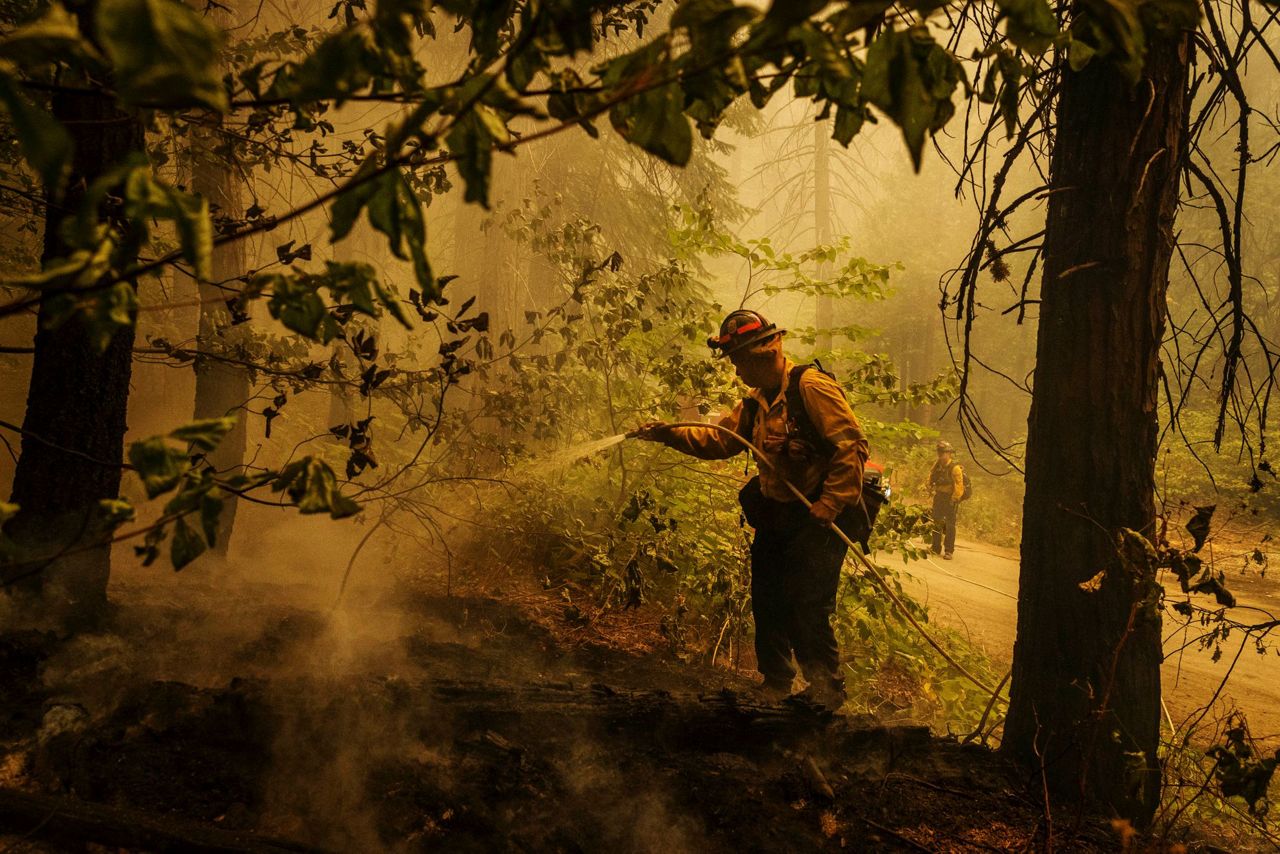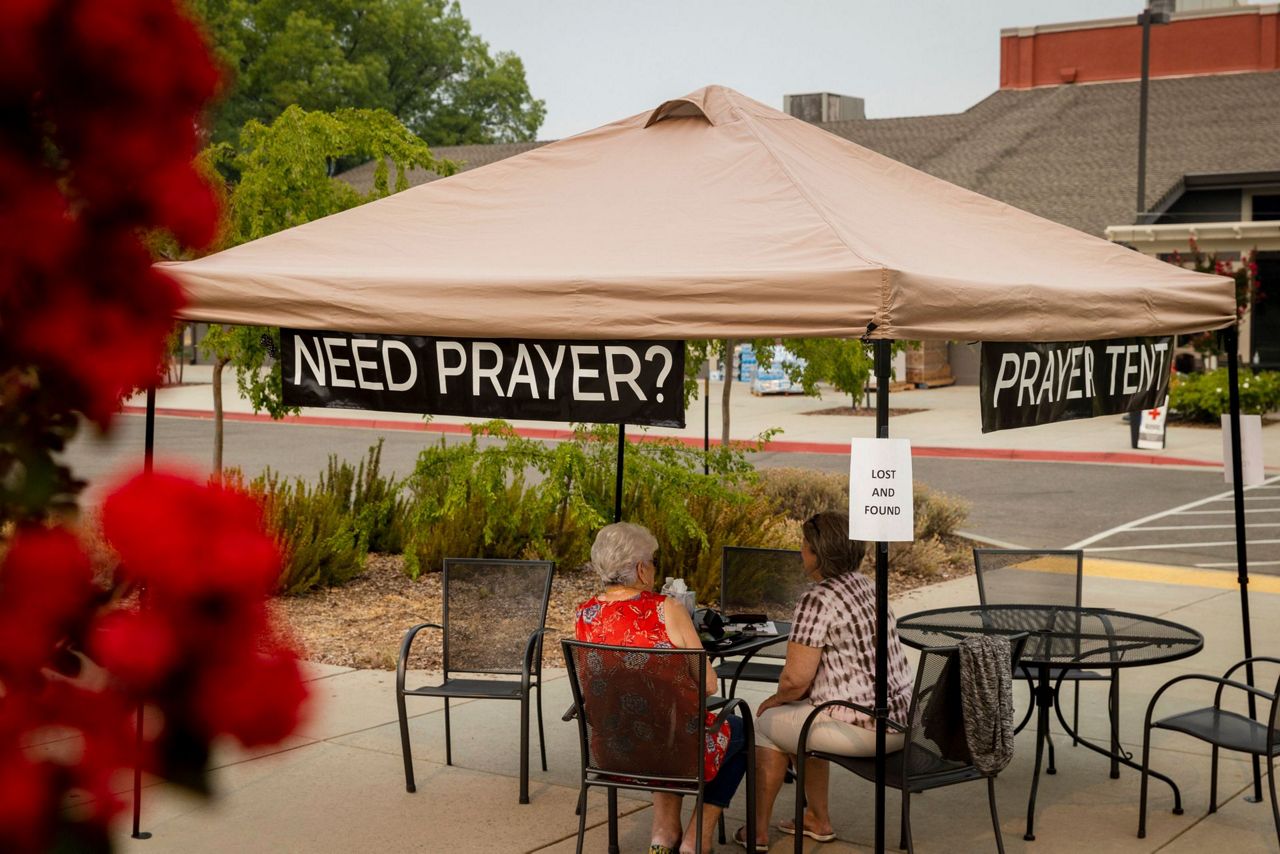PLACERVILLE, Calif. (AP) — Dry and windy weather dogged firefighters’ efforts to contain destructive fires that are devouring the bone-dry forests of drought-stricken Northern California on Thursday.
An estimated 11,000 firefighters were on the lines of more than a dozen large wildfires that have destroyed hundreds of homes and other buildings, forced thousands of people to flee communities and filled skies with smoke.
The U.S. Forest Service announced that it will close nine national forests in the region beginning on Aug. 22 and running through Sept. 6 because of extreme fire conditions and because firefighting resources have been stretched thin by the sheer number of blazes burning around the country.
The monstrous Dixie Fire, burning since July 13 in the northern Sierra Nevada and southern Cascades, ballooned further to about 1,060 square miles (2,745 square kilometers) and was only 35% contained, authorities said.
The fire, which gutted the town of Greenville two weeks ago, has destroyed more than 1,200 buildings including 649 homes, according to ongoing damage assessments.
About 100 miles (161 kilometers) to the south, there was still no official count of the number of homes destroyed when winds whipped the Caldor Fire into an inferno that roared through the Sierra town of Grizzly Flats this week. Those who viewed the aftermath saw few homes still standing in the community of 1,200 residents.
Fire managers were rushing resources to the fire growing on steep slopes in a forested region southwest of Lake Tahoe. More than 650 firefighters and 13 helicopters were assigned to the blaze, and air tankers from throughout the state were flying fire suppression missions there as conditions allowed, authorities said.
“The hope is with the additional resources and personnel on scene, we can really start to build that box around this fire and start the containment," said Keith Wade of the California Department of Forestry and Fire Protection.
Evacuees from the Caldor Fire found refuge in places like the Green Valley Community Church in Placerville, west of the fire, where they set up tents and trailers in a parking lot. Adrian Childress, 7, painted pictures to pass the time and a special tent was set up for people who wished to pray.
In Omo Ranch, close to where the fire started, a bulldozer ripped out trees to build a fire line and stop the blaze from spreading south.
While nearly the entire town evacuated, Thurman Conroy and his wife, Michele, stayed behind to protect their house and their business, Conroy General Store. But they were prepared to flee if the fire gets too close.
“The fire wants us bad because it’s made every attempt it can to get out of that canyon and up this way,” Thurman said. “So they keep beating it down. And it’s just ... it's resilient, it’s stubborn, it won’t go away. That’s all we can do.”
California’s fires were among 104 large, active blazes Thursday in 12 states, mostly in the West, according to the National Interagency Fire Center in Boise, Idaho. Those fires combined have scorched nearly 4,000 square miles (10,360 square kilometers).
Climate change has made the West warmer and drier in the past 30 years and will continue to make the weather more extreme and wildfires more destructive, according to scientists.
Drought, heat, low humidity and winds have left California vegetation ready to burn this summer. More than two-dozen new fires erupted Wednesday alone. All but two were quickly contained.
One small but destructive blaze burned through a mobile home park and reduced an estimated 50 homes to ashes in Lake County, about 80 miles (130 kilometers) north of San Francisco. Elsewhere in the northwestern region of the state, two big fires continued to burn in the Shasta-Trinity National Forest.
Meanwhile, Pacific Gas & Electric said Thursday that it had restored power to nearly 50,000 Northern California customers whose power was shut off Tuesday to prevent new fires from being ignited if electrical lines were damaged during high winds. The utility said it found at least 10 instances of weather-related damage, including four that potentially could have caused fires if the utility hadn't de-energized power lines.
___
Antczak reported from Los Angeles.
Copyright 2021 The Associated Press. All rights reserved. This material may not be published, broadcast, rewritten or redistributed without permission.



























